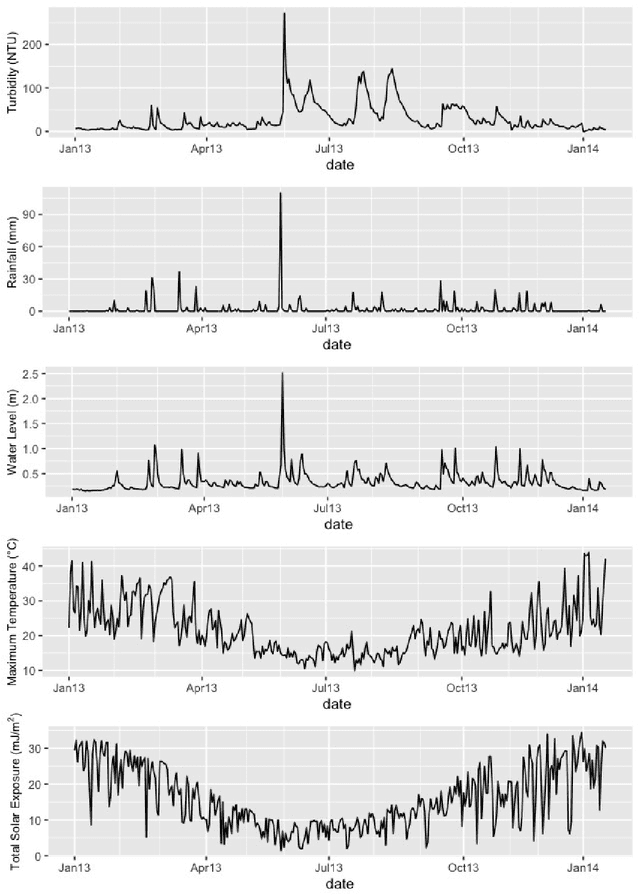Short-term prediction of stream turbidity using surrogate data and a meta-model approach
Paper and Code
Oct 11, 2022



Many water-quality monitoring programs aim to measure turbidity to help guide effective management of waterways and catchments, yet distributing turbidity sensors throughout networks is typically cost prohibitive. To this end, we built and compared the ability of dynamic regression (ARIMA), long short-term memory neural nets (LSTM), and generalized additive models (GAM) to forecast stream turbidity one step ahead, using surrogate data from relatively low-cost in-situ sensors and publicly available databases. We iteratively trialled combinations of four surrogate covariates (rainfall, water level, air temperature and total global solar exposure) selecting a final model for each type that minimised the corrected Akaike Information Criterion. Cross-validation using a rolling time-window indicated that ARIMA, which included the rainfall and water-level covariates only, produced the most accurate predictions, followed closely by GAM, which included all four covariates. We constructed a meta-model, trained on time-series features of turbidity, to take advantage of the strengths of each model over different time points and predict the best model (that with the lowest forecast error one-step prior) for each time step. The meta-model outperformed all other models, indicating that this methodology can yield high accuracy and may be a viable alternative to using measurements sourced directly from turbidity-sensors where costs prohibit their deployment and maintenance, and when predicting turbidity across the short term. Our findings also indicated that temperature and light-associated variables, for example underwater illuminance, may hold promise as cost-effective, high-frequency surrogates of turbidity, especially when combined with other covariates, like rainfall, that are typically measured at coarse levels of spatial resolution.
 Add to Chrome
Add to Chrome Add to Firefox
Add to Firefox Add to Edge
Add to Edge